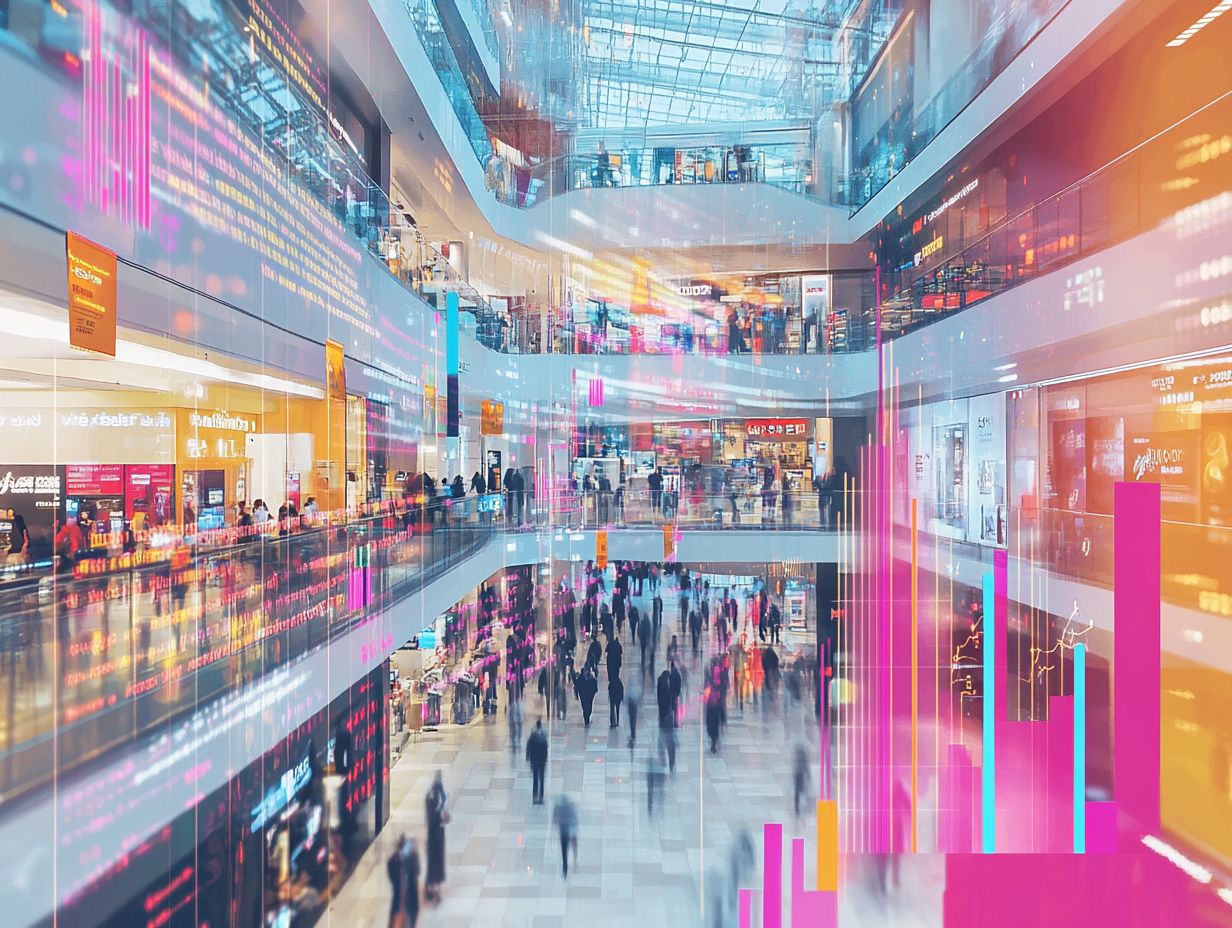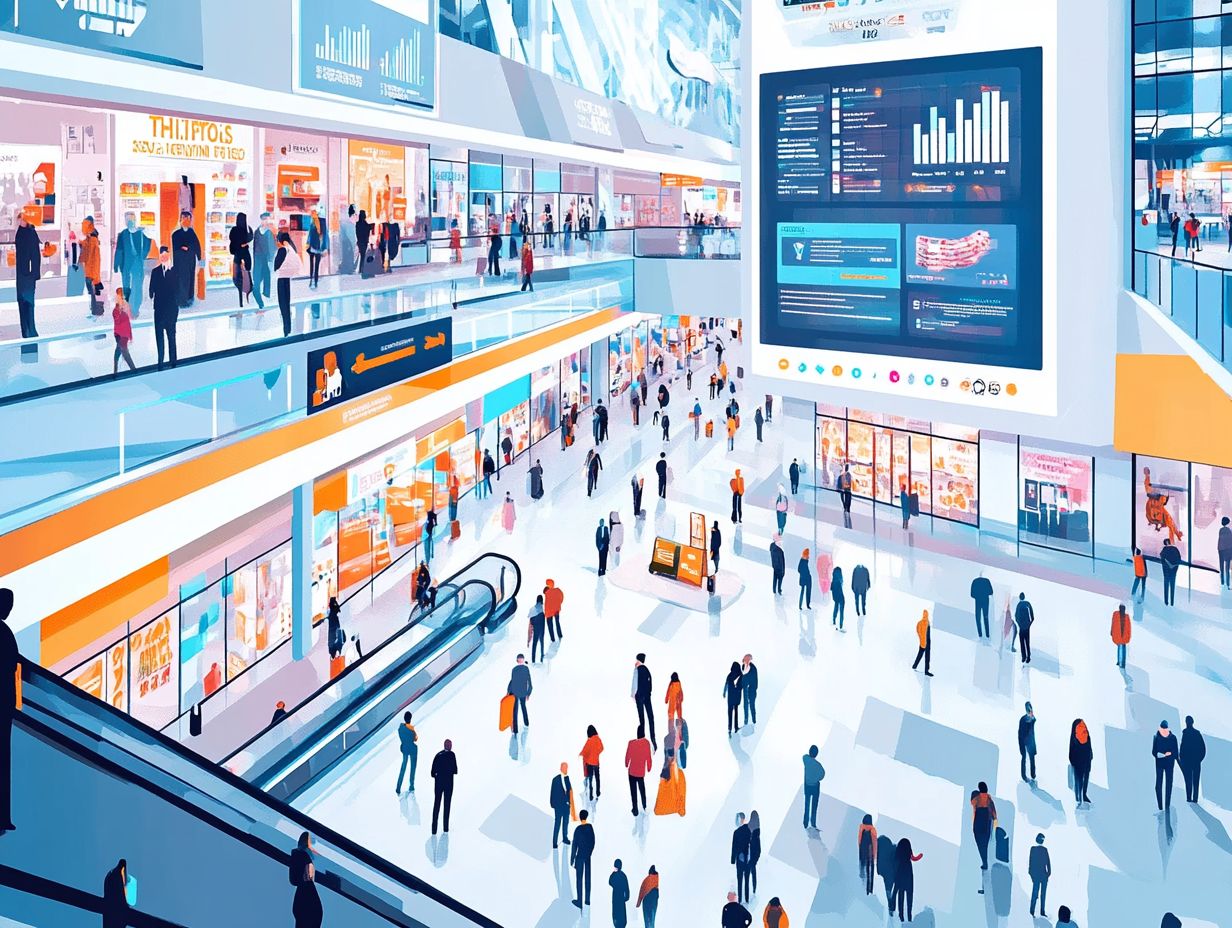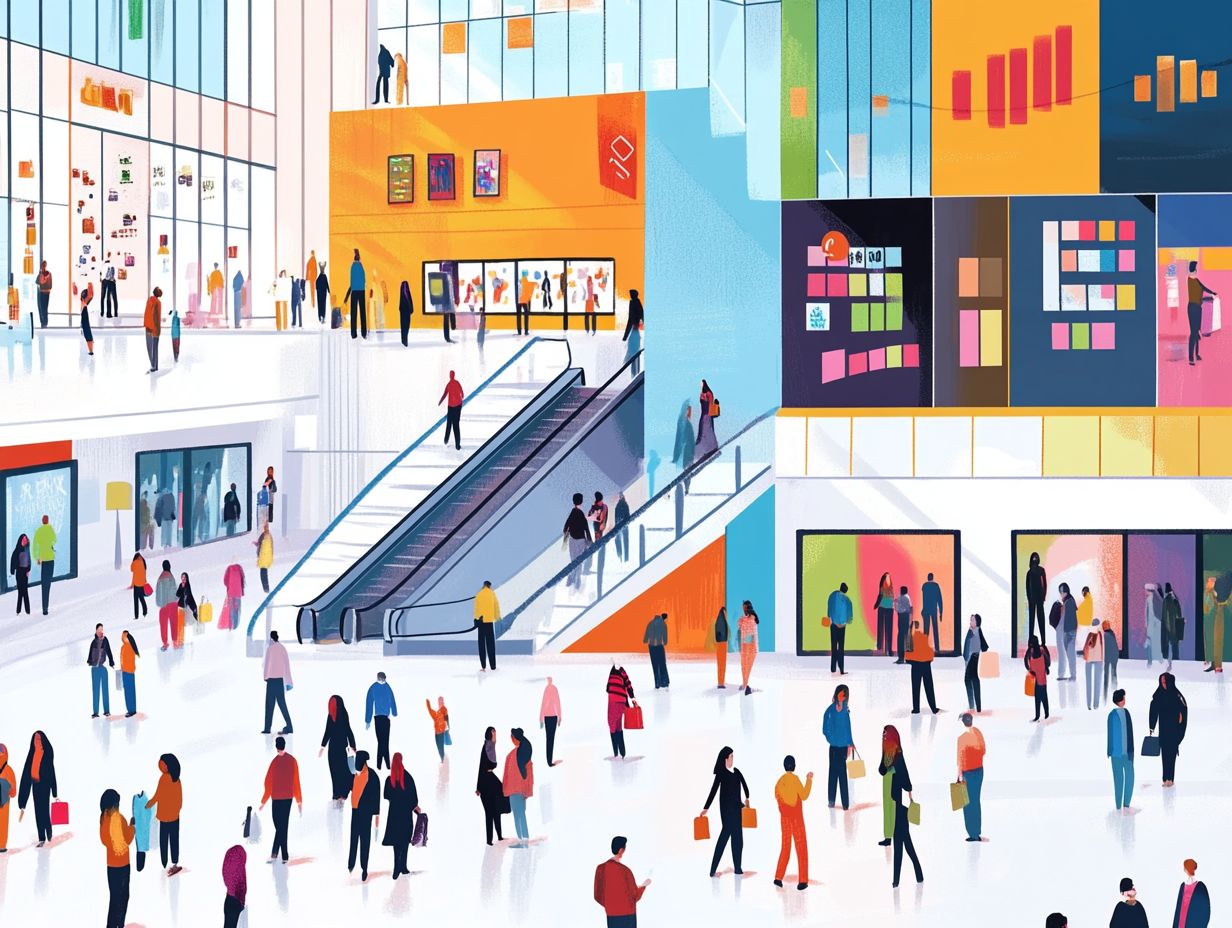In today’s competitive retail landscape, understanding customer behavior and shopping trends is essential for driving sales and enhancing the shopping experience.
Foot traffic analytics offers valuable insights into customer patterns and visitor patterns, enabling mall managers to craft targeted promotions that resonate with shoppers.
This article explores the fundamentals of foot traffic analytics, its significance for mall promotions, and practical strategies for leveraging this data through data-driven decisions.
From identifying peak traffic times to personalizing promotions for distinct customer segments, discover how to implement and measure successful marketing initiatives and promotional strategies that boost footfall and revenue.
Understanding Foot Traffic Analytics

Foot traffic analytics involve measuring and analyzing consumers’ movement patterns within a retail environment, particularly in malls where visitor and shopper behavior can significantly influence retail success.
By utilizing foot traffic analytics, retailers can gain valuable insights into visitor behavior through data analysis, which provides measurements of traffic that can be used to optimize footfall and enhance the overall shopping experience. Additionally, retail analytics help in refining promotional strategies and improving conversion rates.
With advancements in modern technologies such as sensor technology and mobile tracking, foot traffic analytics offer a comprehensive understanding of shopper patterns, enabling businesses to plan strategically and adjust their marketing campaigns accordingly. This location-based marketing provides retailer insights crucial for advertising effectiveness.
What is Foot Traffic Analytics?
Foot traffic analytics involves the collection and analysis of consumer movement data within a retail environment to understand shopper behavior and patterns. This analytical method incorporates location-based marketing and spatial analytics to track how consumers navigate through malls, providing retailers with valuable insights and marketing intelligence.
By utilizing mobile tracking and sensor systems, these analytics reveal trends related to visitor volume, the duration of time spent in stores, and the effectiveness of in-store displays. Additionally, beacon technology and heat mapping are employed to gain deeper insights into consumer movement patterns and engagement levels. These methods also contribute to better shopping center analytics and visitor demographics.
These techniques help identify peak foot traffic times and forecast future retail behaviors. The data collected, which includes both quantitative and qualitative information such as geolocation and demographic data, is analyzed to assess consumer behavior.
This analysis enables retailers to make informed adjustments to their layout, marketing strategies, and inventory management, ultimately leading to improved sales optimization and user experience.
Why is it Important for Mall Promotions?

Foot traffic analytics play a crucial role in mall promotions by enabling retailers to understand consumer behavior, which aids in making informed decisions regarding demographic targeting and promotional strategies. By analyzing visitor demographics and traffic patterns, businesses can optimize sales and tailor their marketing efforts to maximize the impact of seasonal promotions and event marketing. This approach also enhances brand awareness and customer retention.
This analytical framework not only informs retailers about when and where potential customers gather but also uncovers patterns that can guide effective messaging and channel selection. By implementing omnichannel marketing strategies, retailers can better manage campaign targeting and customer journey.
For example, a common strategy employed by successful malls is to adjust promotional timings based on peak foot traffic hours. A notable instance is a downtown shopping center that experienced a 30% increase in sales after shifting its weekend promotions from mornings to late afternoons.
Along with benefiting retailers, insights derived from foot traffic data can help malls create personalized shopping experiences. For instance, malls can send coupons through their mobile apps during high-traffic events to encourage customers to return, thereby enhancing customer engagement and fostering brand loyalty.
Using Foot Traffic Analytics to Create Targeted Promotions
Foot traffic analytics can be used to create targeted promotions by identifying peak consumer traffic times and understanding how long customers engage with promotional materials. This allows for more precise promotion planning and improved customer engagement.
By leveraging real-time data from various traffic sources, retailers can tailor their marketing efforts to align with consumer behavior, ultimately enhancing the shopping experience and increasing conversion rates. Shopping center analytics and real-time analytics are key components for achieving marketing ROI.
Identifying Peak Traffic Times and Targeting Promotions Accordingly

Understanding peak traffic times is essential for effective promotional targeting, as it enables retailers to time their marketing campaigns to coincide with periods of high foot traffic. This practice improves promotional effectiveness and maximizes store traffic.
By analyzing traffic trends and shopper engagement metrics, retailers can develop promotional offers that resonate with shoppers and are more likely to engage them during peak times. This strengthens audience targeting and enhances the consumer experience.
To identify these peak periods, retailers can utilize analytics tools such as Google Analytics or more specialized retail analytics software. These methods typically involve measuring visitor counts at specific times of day or days of the week, along with tracking shopper behavior metrics.
Once peak traffic periods have been identified, retailers can implement their promotional strategies accordingly, ensuring that promotions are executed during times of maximum traffic, thereby optimizing foot traffic conversion and enhancing sales strategies.
Segmenting Customers and Creating Personalized Promotions
Segmenting customers based on demographics and behavioral analytics enables retailers to tailor promotions to individual shopper profiles. This method involves customer segmentation and understanding shopper demographics for effective promotion planning.
By utilizing engagement metrics and analyzing shopper behavior patterns, businesses can refine their marketing strategies to enhance the effectiveness of promotional offers and improve customer retention. Utilizing AI in retail and behavioral analytics helps in achieving these goals.
This targeted approach ensures that the right products reach the right audiences, fostering deeper relationships between brands and consumers.
For example, a cosmetics company may analyze purchase histories to identify a segment of consumers who consistently buy skincare products and then send these consumers targeted promotions for new moisturizers or skincare bundles.
Similarly, a popular online clothing retailer might leverage engagement metrics to personalize email campaigns and recommend outfits based on previous purchases.
Implementing and Measuring the Success of Promotions

Monitoring the success of promotions and assessing their impact on sales and customer engagement enables retailers to evaluate their effectiveness and refine their strategies based on sales data and various campaign performance metrics. This is essential for understanding promotional effectiveness and optimizing marketing optimization.
By utilizing foot traffic analytics, businesses can gauge the effectiveness of their promotions and make informed decisions on how to enhance future marketing efforts. Analytics tools and data visualization are integral in this process.
Strategies for Implementing Promotions
To effectively implement promotions, it is essential to adopt strategic promotional methods and enhance customer engagement experiences, such as event marketing and digital signage, to attract visitors. This includes leveraging interactive promotions and cross-channel marketing for greater impact.
By integrating these strategies, retailers can increase customer engagement and drive foot traffic into their stores. Custom displays not only capture shoppers’ attention but also encourage interaction through enjoyable experiences, such as gamified promotions or virtual try-ons.
These engaging activities can create memorable moments for customers, which may lead to social media shares and social media integration. Additionally, offering personalized promotions through mobile apps can help strengthen customer relationships by making individuals feel valued, thereby enhancing customer loyalty.
By leveraging these technologies and strategies, companies can foster a culture that promotes not only sales but also meaningful customer relationships.
Measuring the Effectiveness of Promotions through Foot Traffic Analytics
The effectiveness of promotions can be assessed through foot traffic analytics, which provide retailers with valuable insights into how their promotions influence customer behavior and sales results. By analyzing foot traffic reports and employing ROI measurement techniques, retailers can evaluate the success of their promotions and adjust their marketing strategies for future campaigns. This process involves market research and the use of business intelligence tools.
Analytics tools such as heat maps visually represent the areas of the store where customers moved or spent time, while GPS and mobile tracking technologies gather demographic data on customer visits during the promotional period. Retailers can further evaluate the effectiveness of their campaigns by examining metrics such as conversion rates, dwell time, and customer engagement levels.
By utilizing tools like Google Analytics or foot traffic software, businesses can compare foot traffic data with sales figures to gauge the success of their promotions. This information enables decision-makers to implement necessary changes, ensuring that future campaigns are not only more targeted but also better aligned with customer preferences. These insights contribute to actionable insights and enhanced promotional analytics.




